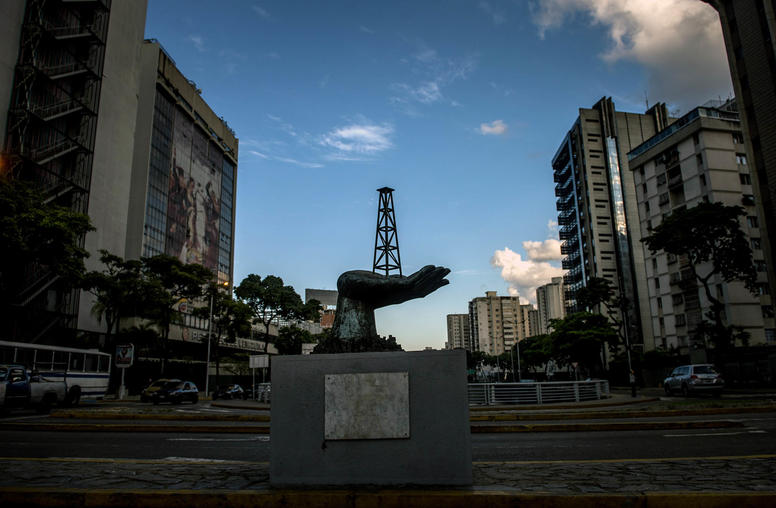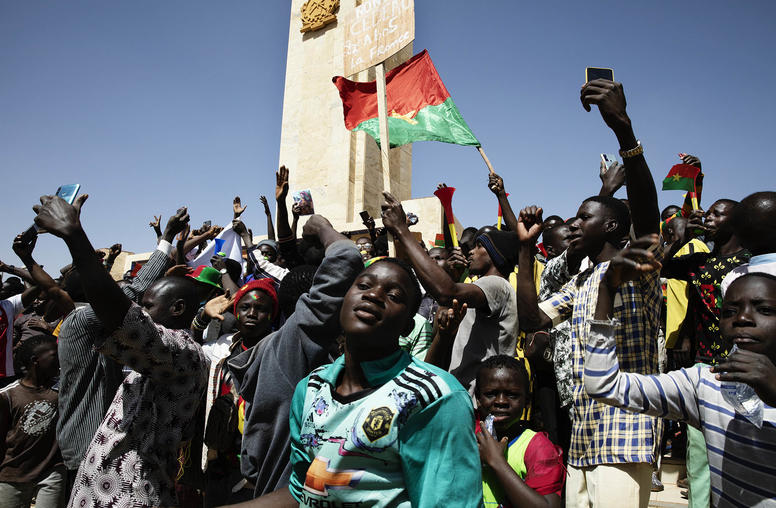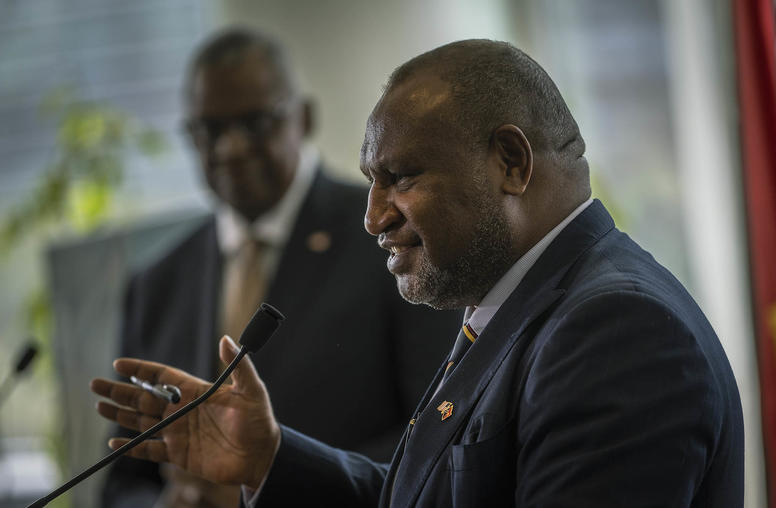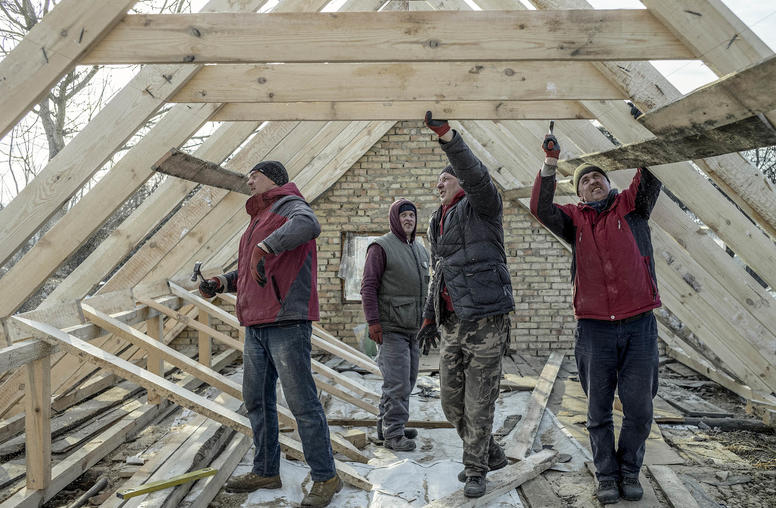Putting the Global Fragility Act into Action Can Save Money and Lives
But how do we get there? Leading peacebuilding experts offer their advice.
The U.S. government (USG) is preparing to unveil a new strategy over the coming months to tackle the underlying causes of fragility and conflict in vulnerable countries around the world. The strategy comes at an important time, just as the United States and other international donors seek to respond to rapidly increasing health, food, and other emergency needs as a result of the coronavirus outbreak. It will be critical that in line with the new strategy, this aid does not inadvertently stoke new tensions.
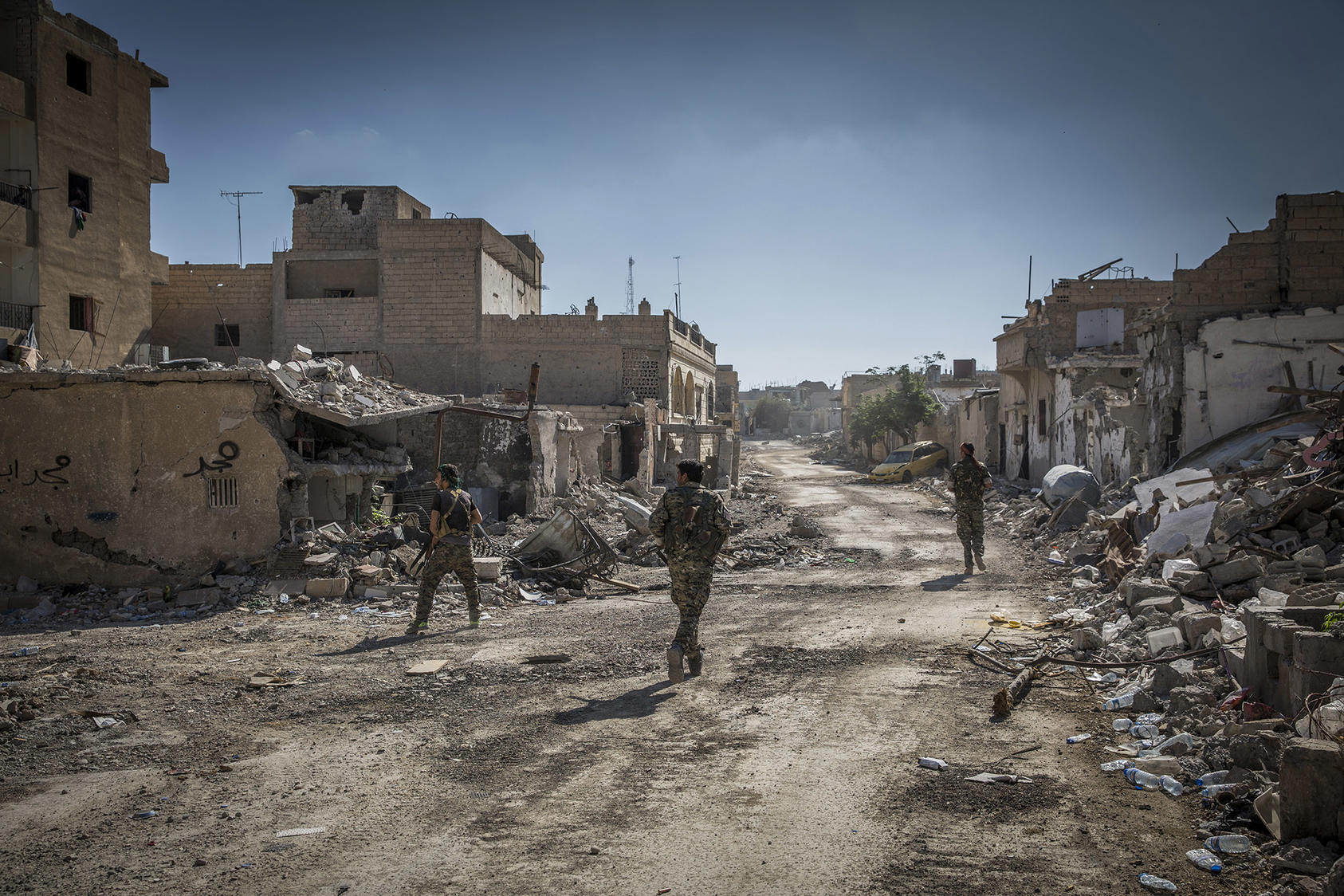
The Global Fragility Act (GFA) requires the State Department, USAID and other agencies to put in place for the first time a comprehensive strategy, relying on best practices that are key to more effective and integrated U.S. policy and development interventions. The strategy will outline how agencies will engage earlier and more consistently to prevent violence and to stabilize communities that have been torn apart by war. In the past, U.S. assistance in these countries has too often been siloed, lacking an overarching framework for delivering emergency relief, for promoting economic and political development, for bolstering security forces, and for resolving conflict through diplomacy, mediation, and peacebuilding programs.
Yet executing this new mandate in fragile environments will be a tall order. The principles embedded in the GFA—including closer U.S. interagency coordination, deeper consultations with international partners on the ground, and more nimble policy and programs that are responsive to in-country conditions—have gained wide acceptance across the international community. But putting them into practice has proven far more difficult; doing so will require tackling the bureaucratic, political, and operational obstacles to doing things differently amid a global pandemic.
To help generate practical solutions to advance the GFA and implementation of a new U.S. strategy, USIP recently partnered with the Alliance for Peacebuilding, Mercy Corps, the State and Defense departments, and USAID, to host a series of consultations with leading peacebuilding and development experts. These experts offered recommendations across four broad thematic areas:
- Deploying USG diplomatic tools and development programs;
- Promoting civilian security and security sector reform;
- Engaging multilaterally and coordinating with international partners in fragile states; and
- Putting in place strategies for research, learning, and measurement.
Use Diplomatic and Programmatic Tools to Incentivize Change
As the USIP-convened Task Force on Extremism in Fragile States noted, addressing fragility and the root causes of violence is a deeply political enterprise. Acknowledging and building on this insight is a critical first step to using USG tools more effectively in fragile environments, where the social contract between citizens and the state is severed and societies are fragmented and prone to violence. USG efforts in these countries (called country plans) should take this basic insight as a point of departure: diplomatic and development activities should be viewed not only as tools for USG officials to communicate with country representatives and to promote economic development, to encourage local actors that are leading peacebuilding and political reform. This insight has ramifications at every stage of the policymaking cycle including the creation of organizational incentives for U.S. diplomatic and development staff and the way U.S. missions are staffed; the prioritization of investments in and partnerships with certain governments; and the design, implementation, and monitoring of U.S. development programs.
Peacebuilding experts offered several practical solutions for using USG tools more effectively in fragile environments:
- Supplement diplomatic training with background on the political impacts of U.S. development programs.
- Institute a system of rewards at the State Department that recognizes U.S. diplomats’ efforts to incentivize national and local reforms.
- Identify and prioritize countries with strong U.S. missions, where the host government is either committed to reform, or where poor governance is not so tied up with regime survival as to be implausible for the time being.
- Be transparent and consistent about communicating U.S. expectations for reform, including through the establishment of compact-like agreements that spell out mutual goals and expectations.
- Systematically consider whether diplomacy or public communications interventions may be more effective than programmatic ones.
- Keep U.S. diplomats in these countries focused on diplomatic engagement with their host country counterparts, while they also work with U.S. implementing organizations and international partners to ensure they are encouraging host country reforms.
Integrate Security Sector Reform
While promoting security and providing military assistance are often perceived as precursors to and distinct from political transitions, the reality is that engaging with the security sector is also a highly political endeavor. Understanding how power dynamics can shift or be shaped through engagement with the security sector is critical to creating the longer-term conditions for reform and peace. Holistic approaches are needed that factor in the potential impacts of U.S. engagement across all sectors, a lesson that has gained wide currency, but, as a recent CSIS report concludes, is not being widely applied by the USG.
The following approaches can help incentivize change, particularly in the security sector:
- Identify local actors that understand dynamics on the ground and are well positioned to engage with the security sector and non-state actors.
- Combine local-level and national-level engagement to encourage adherence to a reform agenda and ensure there is adequate Department of Defense coordination between the operational community and officials with responsibility over security sector reform.
- Use compact-based agreements modeled on the Security Governance Initiative to identify parts of the security sector that are ripe for reform, to deepen the relationship with security sector actors, and to initiate discussions about more structural and political reforms.
- Given the poor quality of data on this sector, whether it be the prevalence of small arms or human rights violations by security forces, seek to triangulate sources of data to increase its legitimacy.
- In post-conflict environments, identify weapons surpluses and prioritize the control of stockpiles, modeled on the approach utilized by the European Union Force in post-war Bosnia and Herzegovina.
Use Development Coordination Platforms to Solve Multiple Problems
Like diplomatic, development, and security sector tools, national-level coordination structures that are primarily designed to help align the activities of external donors on the ground, can in fact help solve multiple policy challenges. Such structures can be a tool for building a shared economic and political vision with the host government, and they can and should help create a space for local actors and civil society to engage with the government. That can only happen, however, if the USG prioritizes international engagement at the outset in the development of country plans, rather than bringing in international partners as an afterthought, as happens all too often. Given that international assistance tends to be highly fragmented in fragile states where governments lack capacity to manage diverse sources of aid, the burden is on international donors like the United States to lead collaborative efforts and policy processes on the ground.
The following approaches can help incentivize change, particularly in the security sector:
- Dedicate staff at U.S. embassies to lead and engage in-country coordination mechanisms.
- Use these coordination mechanisms as way to break down silos between traditional humanitarian, development, and security assistance, and to ensure that all actors understand the importance of security assistance and reform to the political transitions in fragile states.
- Use these platforms to mobilize the diverse set of local and international actors that must work together to tackle fragility, including the entrenched war economies that sustain conflicts.
- Include local civil society actors in these platforms to ensure shared policy frameworks are consistent with local conditions on the ground and are realistic, and to reinforce vertical accountability between the government and domestic civil society.
Build Comprehensive, Flexible Monitoring and Evaluation Frameworks
Monitoring progress toward implementing the GFA, including in the designated pilot countries, will also prove challenging, since the legislation lays out a 10-year time-horizon—a timeframe that is adequate to achieving results in fragile contexts but difficult to reconcile with existing USG structures and processes. These requirements will test USG budgetary and policy systems, which are constrained by the one-year budget cycle and four-year election cycle, among other bureaucratic and political hurdles. The bill requires agencies to base their 10-year efforts on a robust monitoring and evaluation framework, and subjects them to a rigorous congressional reporting schedule.
Experts agreed that it will be critical to start the policy planning process with a clear, shared understanding across agencies of the USG’s objectives in each country, and to carefully calibrate the data collection and monitoring of progress to the achievement of those shared objectives. In developing a robust monitoring and evaluation framework, USG decision-makers should:
- Consider where the data that informs the measurement of progress comes from, including whether it is considered legitimate by national and local actors, what credibility it has in Washington versus in country, and whether it is consistent with existing international indicators —such as the U.N. Sustainable Developments Goals.
- Ensure that the framework is adequate to assessing not just individual program effectiveness, but a USG country strategy writ large, to include non-program interventions.
- Seek to measure not only gaps in stability and governance, but also sources of national and local resilience, to ensure U.S. policy helps to build long-term resilience.
- Capture progress on the ground, as well as the performance of USG interagency efforts.
Elizabeth Hume is vice president for the Alliance for Peacebuilding.
